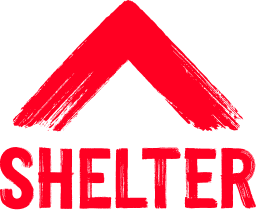Business ownership in practice
The digital framework often refers to the need to connect what we create digitally with what Shelter is trying to achieve as a charity. The business owner is the role which makes that connection, and drives what digital ultimately means for users and for Shelter.

Business owners are senior managers at Shelter, responsible for seeing that our digital priorities flow from our organisational strategy. They facilitate the prioritisation of digital work within their directorate, ensuring our demand can be met by our capacity.
'Business ownership through the lens of the digital framework and associated lifecycle has been a catalyst for improving the way our teams and subject matter experts come together to improve our users journeys.
As business owner for Shelter services, the digital framework has enabled me to set clearly defined strategic digital objectives, removing blockers and allowing our teams to focus on delivering value for the people who need us the most.
In short, the model has been a game changer for the way we work.'
Stuart Moore, Assistant Director of Services, Shelter
The 5 business owners, along with representatives from Data & Technology and Marketing, comprise the Digital Leadership Group (DLG), which oversees everything from performance and improvement to alignment across our directorates, opportunity-spotting and vision-making, and more.
Several accountabilities lie with a business owner, spread across the 3 phases of the digital lifecycle.
1. Future vision and business planning
Strategic purpose
Business owners set objectives for their self-publishing teams and for centralised product teams, through focused conversations with those teams. The result should be clearly defined goals that are closely pinned to strategy and that aspire to deliver value to users and to the business.
Goals might emerge from insight-led opportunities, for example when research from Shelter Hubs reveals a user need for online help with a housing issue. Or when wider circumstances trigger a digital need such as housing information about the Covid pandemic.
Business owners keep our eyes on Shelter’s strategy, and update teams as those strategic goals change.
Decision-making
A business owner makes a range of decisions and choices, primarily based on which options let us meet our strategic goals:
Committing to new products and services, including capacity and budget choices for their directorate. If capacity doesn’t allow for all work to be delivered, it’s the business owner’s prerogative to choose which products or services to deprioritise
Deciding whether to continue or expand existing products and services, or to decommission them
When required, approving technology investments based on options evaluated by product teams
Selecting external partners and suppliers based on appraisals and recommendations
Collaborating with other business owners to align multiple goals across Shelter’s digital operations
2. Creating services and products
During this phase of the lifecycle, business owners are a key support mechanism for product teams and self-publishing teams, addressing barriers and dependencies when needed, and advocating for the work as it develops, within the organisation.
They monitor development roadmaps, progress and outcomes, and also ensure teams build measurability and feedback mechanisms into new services and products.
3. Operating services and products
Once a service or product is live, content managers monitor its performance - how it meets user and business needs - and report to business owners.
When a product or service no longer gives value to users or no longer helps meet a Shelter strategic need, the business owner is responsible for improving or cancelling it.
Effective reporting underpins performance monitoring. Business owners make sure content managers and teams running and maintaining live products and services are reporting on the analysis and evaluation that matters and that provides insight.
In that vein, they foster a culture of feedback and continuous improvement.
Also in this lifecycle phase, business owners support teams in the successful operations and optimisation of live products and services.
Related
Shelter’s devolved model of delivering digital.
The tiers that determine how digital work is distributed.
Learn the lingo with Shelter’s digital glossary.
Contact us about the digital framework
Have a question or comment? Found a bug? Or maybe you’d like to contribute to the framework? Use our contact form to get in touch.
